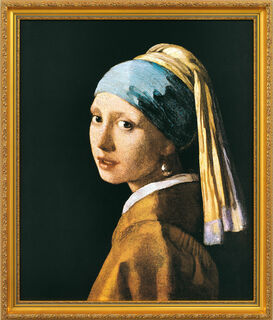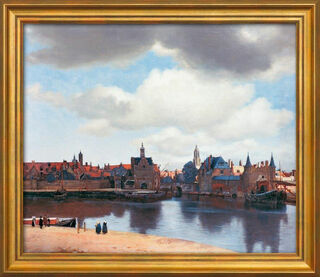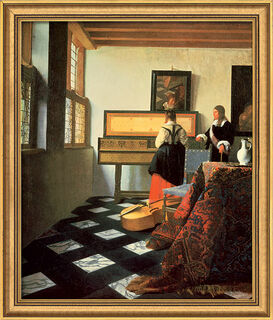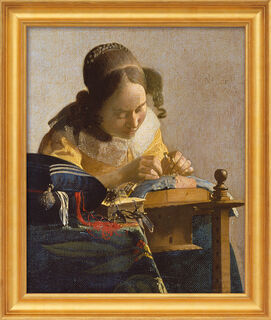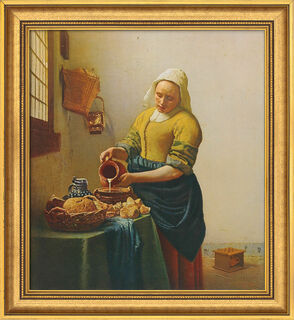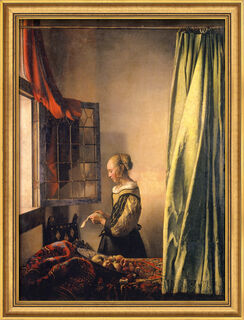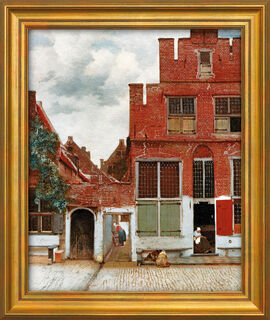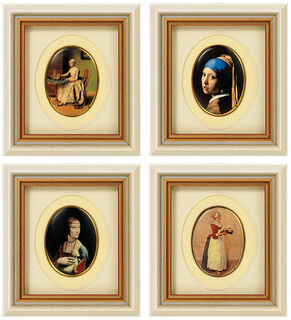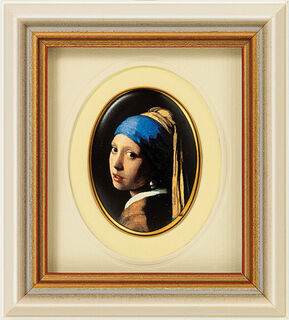Jan Vermeer van Delft
Jan Vermeer is one of the most important Dutch painters of the Baroque epoch. He was baptised on October 31, 1632 in Delft and buried there on December 15, 1675. As there was no school of painting in Delft at that time, the son of a silk weaver, art dealer and innkeeper was trained as a craftsman. His admission to the Delft Guild of St. Luke in 1650 testifies to his activity as a master painter. Only 37 of his paintings have survived to this day. His main theme was genre painting, as there are only a few portraits or religious paintings in his œuvre.
The interior views radiate silence, security, and inner peace. The painter from Delft was able to achieve these effects with subtle colour harmonies and refined shadows. He was also a master of the photographic perspective. The genre paintings show few figurative scenes, to which symbolic content is often attributed.
A special mention should be given to Vermeer's Delft City View of 1661, whose naturalism testifies to a high level of mastery. In addition, "The Girl with the Pearl Earring" became the epitome of beauty and grace. For the painter, it was a challenge to bring the viewer into contact with the model. The young woman's eye contact skilfully establishes a connection, but at the same time achieves distance again through the body that is turned away. Many generations of art lovers have rightly been fascinated by the extraordinary expression of this painting.
Vermeer strove for perfection in his painting, often produced only just four paintings a year. As a result, the father of eleven children struggled with financial hardship, which increased during the last years of his life. Right after his death, Jan Vermeer fell into oblivion. It was not until the middle of the 19th-century that people learned to appreciate the quality of his paintings.

